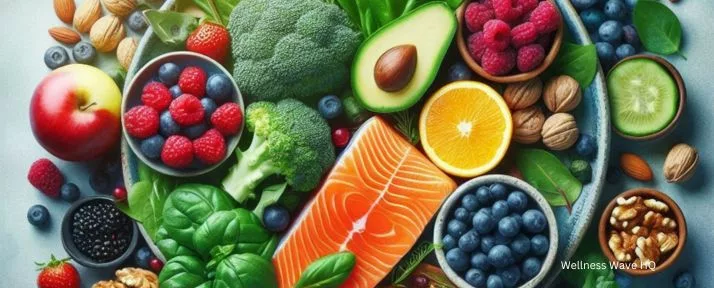
Have you ever considered that what’s on your plate might be fueling or fighting your pain? Chronic inflammation, a known contributor to many health conditions, has a direct impact on chronic pain. This article reveals the science-backed dietary choices that can help reduce inflammation and alleviate pain, turning each meal into a powerful tool for better health.
Inflammation is your body’s natural defense against injury or infection, like a security system activated to protect you. When it’s acute, like swelling from a cut, it’s beneficial. But when it becomes chronic, occurring without an immediate threat, inflammation shifts from defense to damage, contributing to chronic conditions such as arthritis, cardiovascular disease, and persistent pain.
- Cytokines and Free Radicals: These molecules are part of your body’s immune response, but overproduction can lead to tissue damage, worsening pain and inflammation.
- Key Insight: Chronic inflammation doesn’t just harm physical health; it can exacerbate pain sensitivity, fatigue, and impact overall well-being.
So, how does this chronic inflammation happen? Our body’s immune system tries to keep us safe by releasing substances called cytokines and free radicals. They’ve got an important job, but when they’re on overdrive, they cause trouble. According to research from the National Institutes of Health (NIH), elevated cytokine levels can contribute to inflammation and chronic pain, highlighting the importance of regulating immune responses. Think of them as your overenthusiastic friends who mean well but end up breaking things because they are just too excited. This can lead to tissue damage over time, and that’s not cool because it paves the way for chronic diseases like arthritis and heart disease.
Understanding the players in this game is crucial. Cytokines are signaling molecules that help cells communicate during immune responses, and free radicals are unstable molecules looking to pair off with other molecules. While this is part of the natural process, too much of it can promote inflammation and pain that’s just a drag to live with. Recognizing this means we can start thinking about ways to keep these guys in check without causing knock-on problems.
Educating yourself about how your body works is key. It’s all about balance and knowing when protective mechanisms are turning into long-term problems. Recognizing early signs of chronically inflamed states in your body can lead you to take steps—dietary and lifestyle changes—that may have just the right calming effect in the long run.
Decoding the Gut-Immune Connection: Your Body’s Inflammation Controller
Our gut, often called the “second brain,” plays a vital role in inflammation regulation through the gut-brain axis. This intricate communication network directly affects how our bodies respond to inflammation and pain.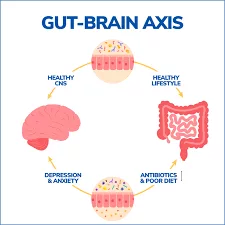
- Leaky Gut Syndrome: A poor diet can lead to “leaky gut,” where the gut lining becomes permeable, allowing unwanted particles into the bloodstream. Imagine this troublemakers like a coffee filter that’s supposed to keep the grounds from getting into your cup. When it’s working well, only the good stuff passes through, but when it’s off-kilter, bigger particles sneak into your bloodstream that shouldn’t be there. This can trigger inflammation and, frankly, mess with your whole system.
- Gut Health and Inflammation: Processed foods and excess sugar can disrupt gut bacteria, weakening the gut’s role in managing inflammation. So, when these gut buddies get out of whack, the control over inflammation weakens. Focusing on restoring this balance is like patching the leak, stopping those unwanted particles from causing inflammation.
When you feed your gut with good stuff, it sends happy signals that help keep inflammation levels in check. Sounds simple, right? But when things go south in your gut, inflammation can become a bigger issue.
Recent studies highlight how essential dietary fibers and probiotics are in supporting our gut health. Fiber acts like a superfood for our gut bacteria, helping them thrive and protect the gut lining. Probiotics, those friendly bacteria we get from fermented foods or supplements, can be real lifesavers for your gut’s health and thus help curb inflammation. Keeping these in check supports the overall inflammation-balancing act your body aims to maintain.
Taking a proactive approach in nurturing your gut means mindfully choosing foods that support a balanced microbiome. Limiting heavily processed foods and incorporating more whole, fiber-rich options doesn’t just benefit your digestive system—it has an effect on how your whole body responds to infectious or inflammatory triggers.
Nutritional Powerhouses: How Anti-Inflammatory Nutrients Work
Let’s talk food heroes—those nutrients that help fight inflammation in the most natural way.
- Omega-3 Fatty Acids: Found in fatty fish and flaxseeds, omega-3s reduce inflammation markers, offering a natural way to mitigate pain. They work by decreasing the production of molecules and substances linked to inflammation. Think of them as the calm responders in your system, ensuring everything remains on an even keel. When your diet includes these regularly, it’s like sending friendly reinforcements to your body’s frontlines.
- Antioxidants: Fresh fruits and vegetables rich in antioxidants combat oxidative stress by neutralizing free radicals. They are the cleanup crew. This helps prevent further inflammatory responses. Antioxidants are the secret agents making sure harmful activity doesn’t spiral out of control.
- Polyphenols: Compounds in foods like berries and green tea reduce cellular stress, protecting against inflammation at the molecular level. They are like the adaptable guardians of your cells, offering protection against various stressors.
They’re powerhouse ingredients that your body can rely on to tone down inflammation and keep everything in balance. Scientific Insight: As highlighted by Harvard Health, the Mediterranean diet is especially effective in reducing inflammation markers, supporting overall wellness for those with chronic conditions.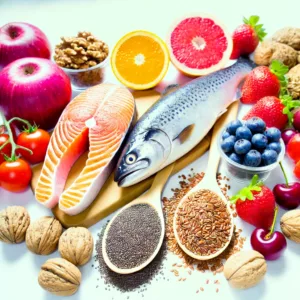
Pain Relief Through Diet: Case Study Highlights
Real stories and science can teach us a ton about how diet influences chronic pain. Let’s look at how certain diet changes have made a world of difference for some folks battling persistent pain.
One of the most effective dietary approaches to reducing inflammation is the Mediterranean diet. Studies on individuals with chronic inflammatory diseases, like rheumatoid arthritis, have shown that adopting this diet can significantly reduce pain and inflammation levels. A study conducted by the Arthritis Foundation revealed that participants with rheumatoid arthritis on a Mediterranean diet reported reduced pain and improved joint function over six months.
- What Makes It Work: High intake of whole foods, healthy fats, and antioxidants supports the body’s natural defenses, while minimizing processed foods reduces inflammatory triggers.
- Evidence: A study conducted by the Arthritis Foundation found that participants with rheumatoid arthritis on a Mediterranean diet reported reduced pain and improved joint function over six months.
This kind of data isn’t just numbers—it brings hope to people struggling with daily discomfort caused by inflammation.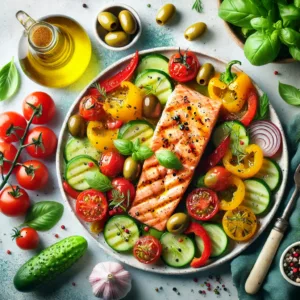
The colorful array of foods in this diet doesn’t just broaden the palate. It serves a purpose, introducing a variety of protective nutrients we talked about earlier, like omega-3s and antioxidants. By focusing on whole, unprocessed foods, this diet supports overall health while targeting inflammation directly.
Adapting to dietary changes like this may seem challenging, but the payoff can be massive if chronic pain is holding you back. Real-world examples show not only possible pain reduction but also improved quality of life. It’s about making small shifts towards foods that are as delightful as they are beneficial.
Exploring these case studies empowers you with insights that food isn’t just sustenance; it’s a tool for managing pain. By wisely choosing what you eat, you take steps towards potentially minimizing chronic discomfort without relying solely on medications. This gives you a chance to be actively involved in your wellness journey.
Are the Anti-Inflammatory Diet and Mediterranean Diet the Same?
The Anti-Inflammatory Diet and the Mediterranean Diet are similar in their goals and many of the foods they promote, but they aren’t exactly the same.
- Anti-Inflammatory Diet:
-
- Primarily aims to reduce inflammation, which can help manage chronic conditions like arthritis, heart disease, and chronic pain.
- Focuses on foods that are rich in antioxidants, fiber, and omega-3 fatty acids, such as leafy greens, berries, fatty fish, nuts, and whole grains.
- Avoids processed foods, added sugars, trans fats, and refined carbohydrates, all of which can increase inflammation.
- Often incorporates anti-inflammatory spices like turmeric and ginger.
- Mediterranean Diet:
-
- Originating from the traditional diets of countries around the Mediterranean Sea, this diet emphasizes plant-based foods, whole grains, olive oil, fish, and moderate wine consumption.
- Known for being heart-healthy, it also naturally aligns with anti-inflammatory principles because it limits processed foods and added sugars.
- Unlike the strictly anti-inflammatory focus, the Mediterranean Diet does not specifically emphasize reducing inflammation but rather supports overall heart health and longevity, which indirectly helps reduce inflammation.
In essence, while both diets prioritize whole, nutrient-rich foods and avoid processed ingredients, the Anti-Inflammatory Diet is specifically tailored to fight inflammation, whereas the Mediterranean Diet is more broadly focused on heart and metabolic health. That said, the Mediterranean Diet is one of the most effective anti-inflammatory dietary patterns, which is why it’s commonly recommended for managing chronic pain and inflammation.
Practical Steps: Applying Anti-Inflammatory Diet Principles to Your Life
Understanding the science behind inflammation is empowering. You don’t need to overhaul your diet overnight; start with small, consistent changes.
- Experiment with Diets: Consider trying the Mediterranean or Anti-Inflammatory diets, both rich in anti-inflammatory foods.
- Begin Small: Replace one sugary snack with a piece of fruit or swap soda for water or herbal tea.
- Listen to Your Body: Keep a food journal to track which foods improve your comfort level, helping you tailor your anti-inflammatory approach to your unique needs.
The idea isn’t to upend your life overnight but to incorporate dietary habits that can sustainably reduce inflammation. When you shift your focus from a ‘diet’ mindset to a lifestyle approach, your changes stick longer, leading to meaningful, long-term benefits.
As you tweak your eating habits, listen to your body—it’ll signal what’s working and what might need more-adjustment. The journey of understanding how food impacts your health is a personal one, but it’s backed by studies and examples that can guide you toward feeling better every day. 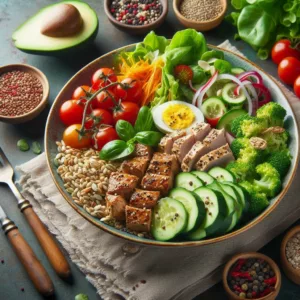
Long-Term Benefits: Building a Life with Less Pain and More Freedom
Focusing on an anti-inflammatory diet isn’t a quick fix; it’s a journey toward sustainable wellness. Over time, you may find that you experience reduced pain, increased mobility, and even a boost in mood and energy.
- Consistency is Key: Long-term commitment to anti-inflammatory foods supports the body’s natural healing processes, offering greater resilience against pain triggers.
- Positive Ripple Effect: Healthier eating often improves mental clarity, energy levels, and overall well-being, creating a balanced, fulfilling lifestyle.
Remember: It’s not just about what you avoid but what you embrace. As you make dietary choices that reduce inflammation, you’re actively building a foundation for a pain-free future.
This journey might challenge you, but the benefits of embracing such changes make it all worthwhile. You’re not in this alone; draw on the wealth of scientific support and personal testimonies highlighting that it is indeed possible to find relief and wellness through mindful eating.
COME JOIN OUR COMMUNITIES!

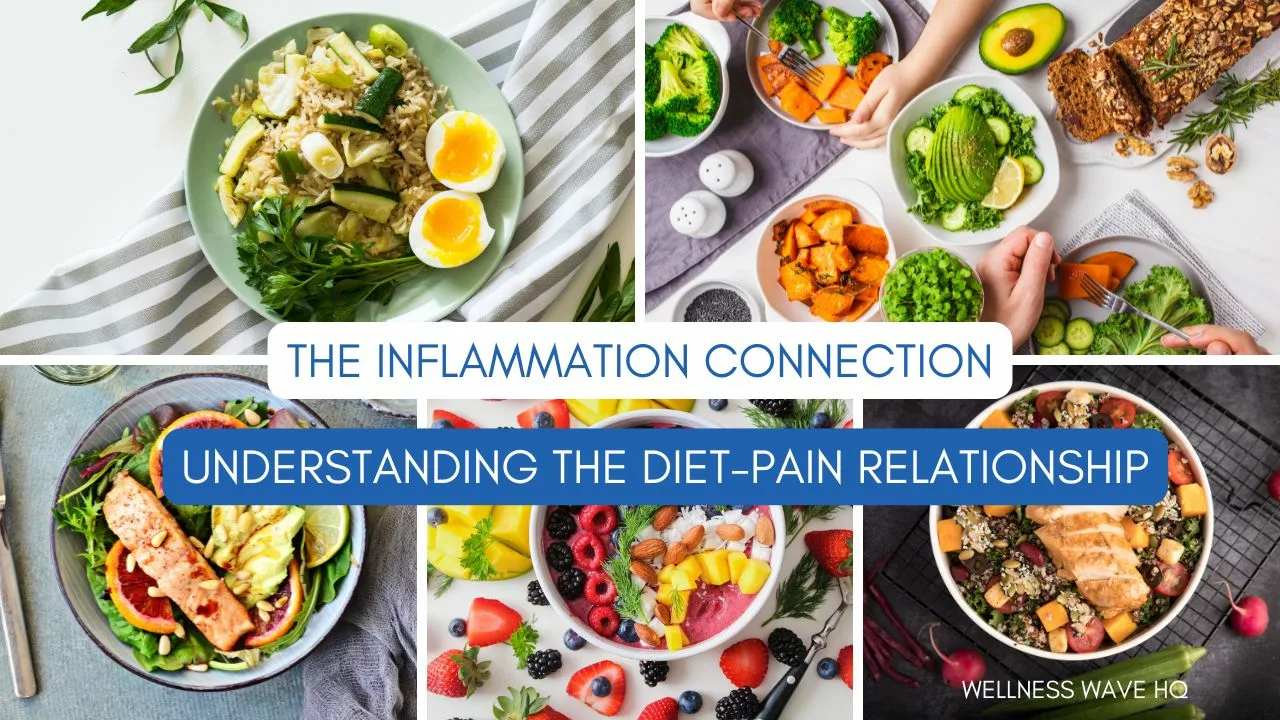
Wow, I knew that a bad diet could hurt you but I didn’t know that it could create a leaky gut! I’m learning with you everyday and I’m very happy to see that you highlight the link between diet and inflammation in such a sensitive manner. And yes, apparently, the Mediterranean diet is one of the best diets that exist on earth to fight inflammation since it’s rich in antioxidants, vegetables, fruits, and whole grains.
Thank you so much for your thoughtful comment! It’s wonderful to hear that the article could shed light on the link between diet, inflammation, and leaky gut—it’s such an important piece of the puzzle when managing health and chronic pain. The Mediterranean diet truly is a powerful approach, with its abundance of antioxidants and nutrient-rich foods, and it’s amazing how these choices can support our bodies.
I’m so glad to be on this learning journey together, and I appreciate your insights! If you ever have questions or want to discuss more about anti-inflammatory diets, I’m here to help.
Warm wishes,
Courtney
This is great. I do have chronic pain and often wonder what I can do.
Exercise has helped, but I never thought how my diet may be contributing.
I saw your list of Anti-Inflammation cookbooks, but are there any Anti-Inflammation cookbooks for vegans?
It would be great to live pain free, so I will be trying some of your recommendations, especially tumeric.
Thank you for reaching out with such a thoughtful question, Paul! It’s inspiring to hear that you’re exploring different ways to manage your chronic pain, especially with the powerful combination of exercise and diet. It’s amazing how an anti-inflammatory diet, particularly with vegan options, can complement the benefits of physical activity.
Your question got me diving into research to find the best vegan-friendly anti-inflammatory cookbooks to add to our list. I’ll be updating the original article you mentioned with these new titles and descriptions so that all the recommendations are in one place for you and others looking for similar resources.
I’m here if you have any more questions or if you’d like tips on incorporating turmeric or other anti-inflammatory ingredients.
Wishing you all the best on your journey toward a healthier, pain-free life!
Courtney